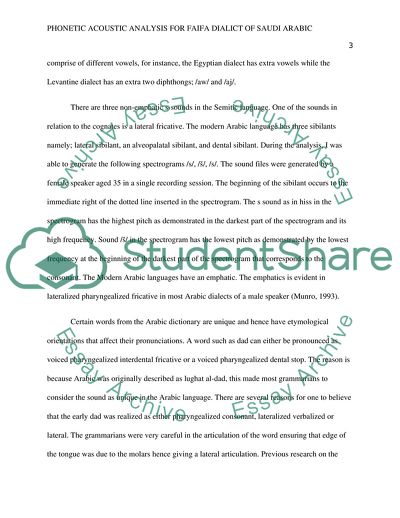Cite this document
(Phonetic Acoustic Analysis for Faifa Dialect of Saudi Arabic Coursework Example | Topics and Well Written Essays - 2750 words, n.d.)
Phonetic Acoustic Analysis for Faifa Dialect of Saudi Arabic Coursework Example | Topics and Well Written Essays - 2750 words. https://studentshare.org/humanitarian/1875978-phonetic-acoustic-analysis-for-faifa-dialict-of-saudi-arabic
Phonetic Acoustic Analysis for Faifa Dialect of Saudi Arabic Coursework Example | Topics and Well Written Essays - 2750 words. https://studentshare.org/humanitarian/1875978-phonetic-acoustic-analysis-for-faifa-dialict-of-saudi-arabic
(Phonetic Acoustic Analysis for Faifa Dialect of Saudi Arabic Coursework Example | Topics and Well Written Essays - 2750 Words)
Phonetic Acoustic Analysis for Faifa Dialect of Saudi Arabic Coursework Example | Topics and Well Written Essays - 2750 Words. https://studentshare.org/humanitarian/1875978-phonetic-acoustic-analysis-for-faifa-dialict-of-saudi-arabic.
Phonetic Acoustic Analysis for Faifa Dialect of Saudi Arabic Coursework Example | Topics and Well Written Essays - 2750 Words. https://studentshare.org/humanitarian/1875978-phonetic-acoustic-analysis-for-faifa-dialict-of-saudi-arabic.
“Phonetic Acoustic Analysis for Faifa Dialect of Saudi Arabic Coursework Example | Topics and Well Written Essays - 2750 Words”. https://studentshare.org/humanitarian/1875978-phonetic-acoustic-analysis-for-faifa-dialict-of-saudi-arabic.


